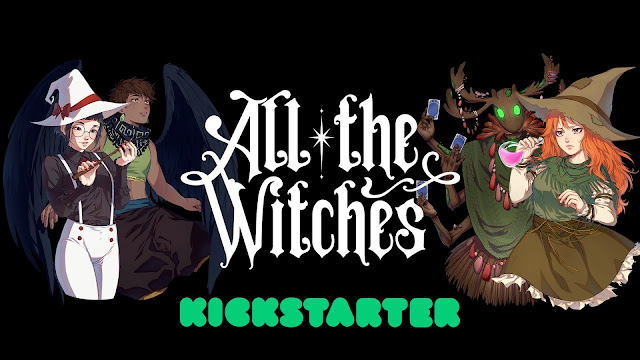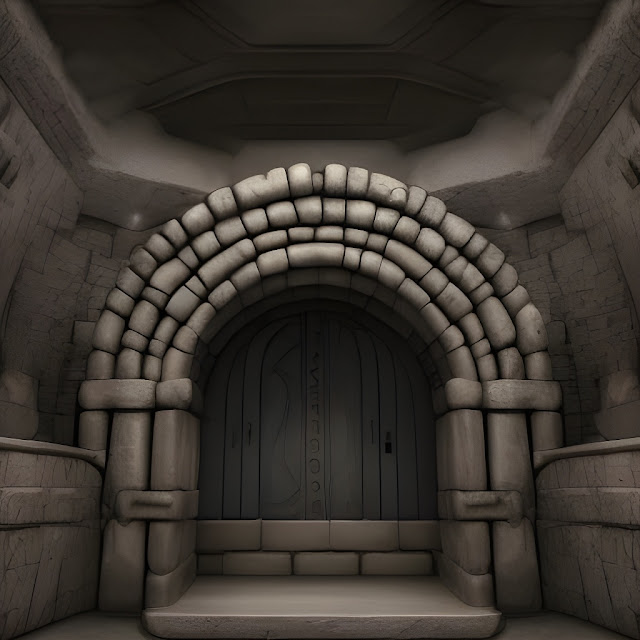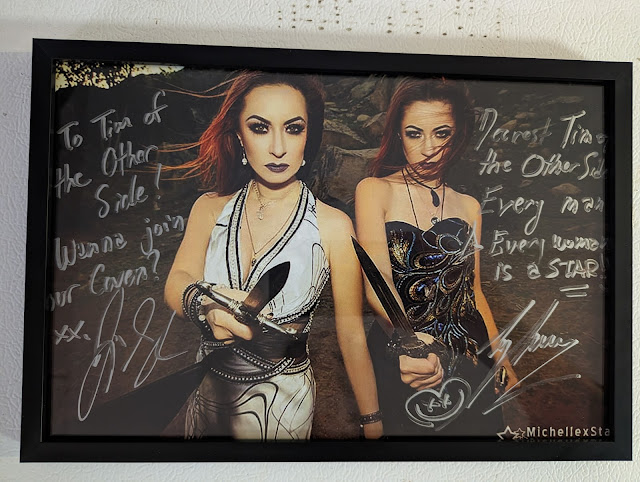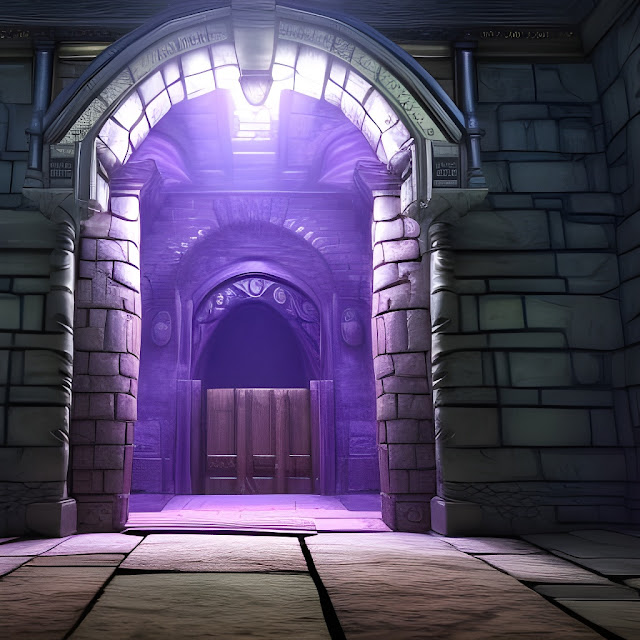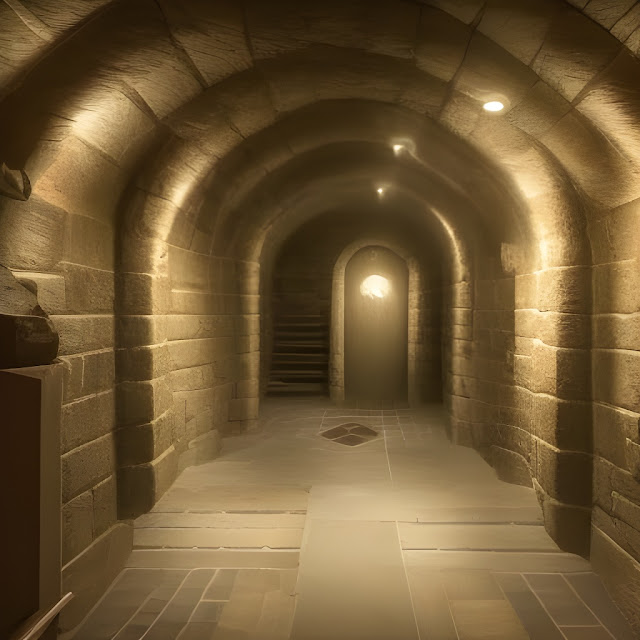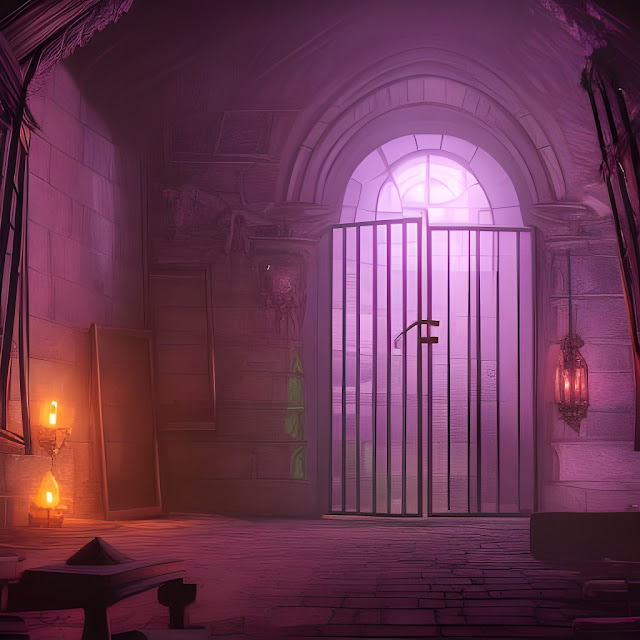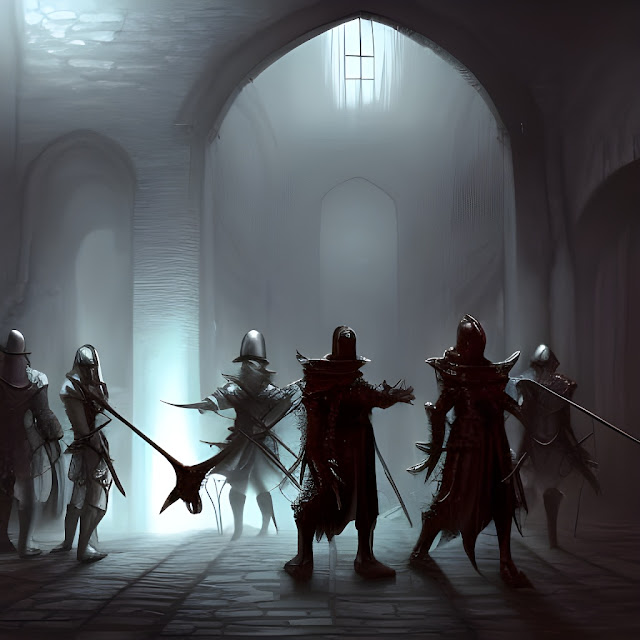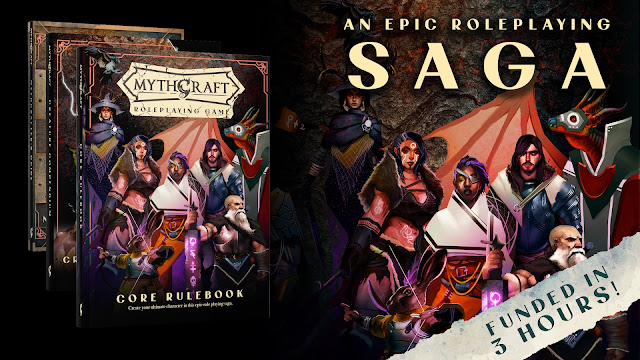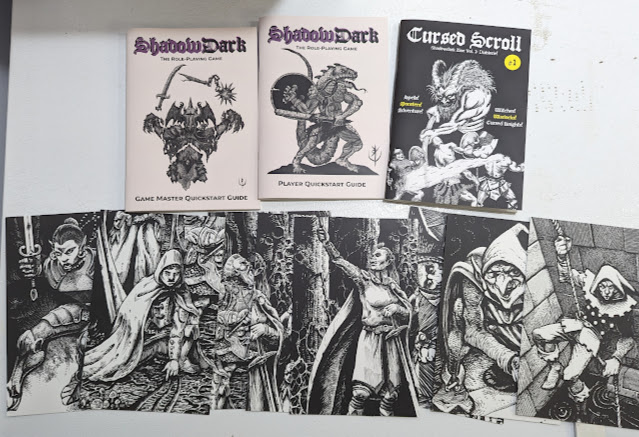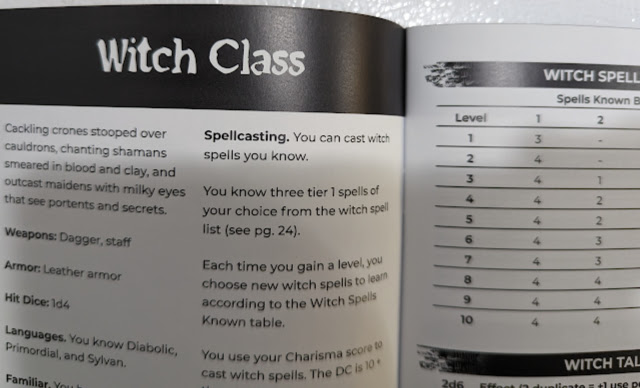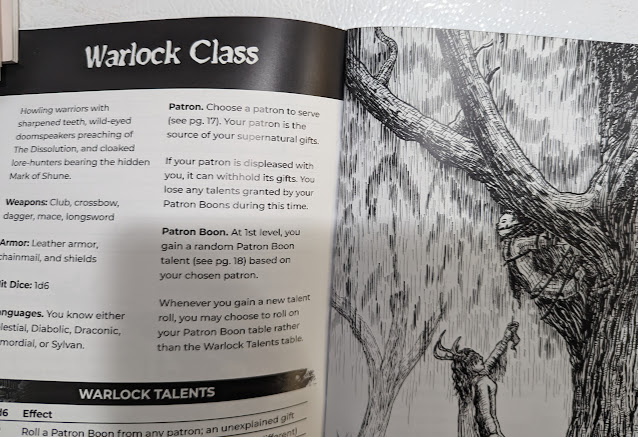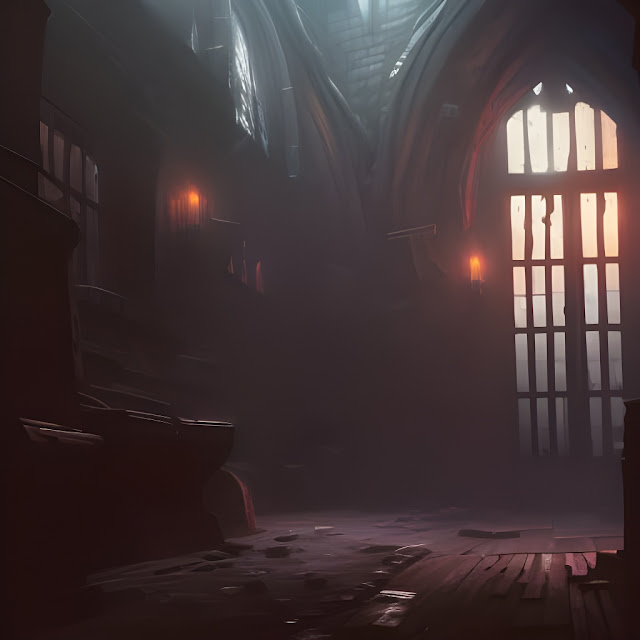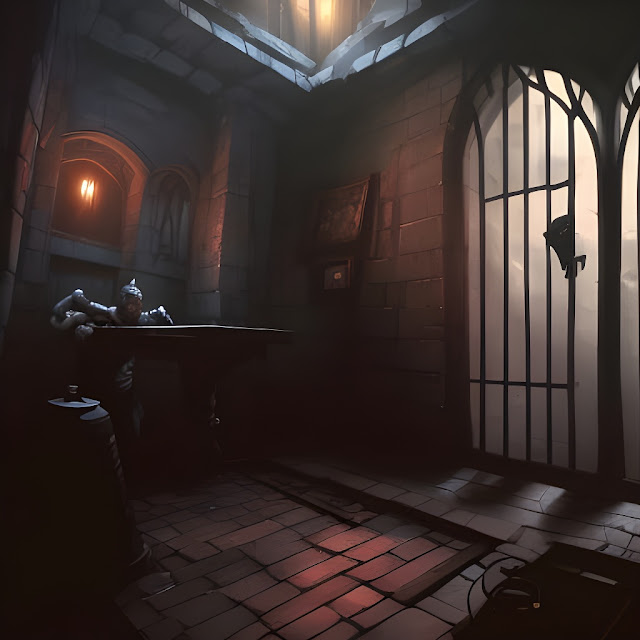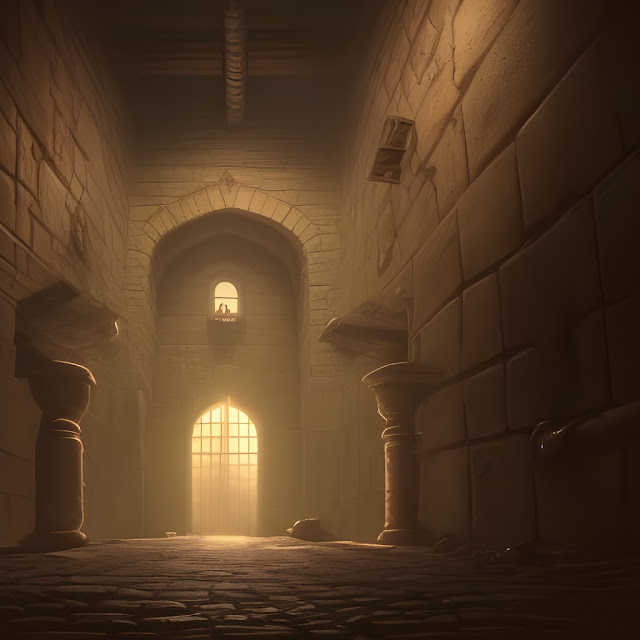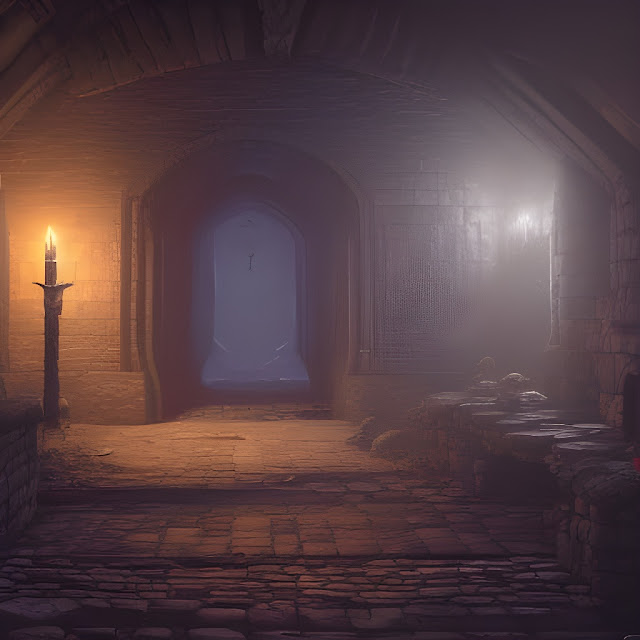Something special today. I had the chance to talk to Emma, aka Emmapanada, the lead designer of the RPG "All the Witches" that is Kickstarting today. What is "All the Witches?" Well, let us find out!
All the Witches

https://www.kickstarter.com/projects/allthewitches/all-the-witches?ref=theotherside
Tim Brannan/The Other Side: It is my pleasure today to be interviewing the team that is currently Kickstaring a new Witch-based RPG, “All The Witches.” Which you can find here, https://www.kickstarter.com/projects/allthewitches/all-the-witches
Today I am talking with Lead Designer Emma for today’s launch.
Before we get into all the questions, please introduce yourself and tell us all what your role is on this team.
Emma: My name is Emma, also known as Emmapanada! I use they/she pronouns and I’m the Creator, Lead Developer, Lead Game Designer for All the Witches. I’ve been playing TTRPGs for a little over 10 years now, and I started creating systems in September of 2020. I’ve been working on All the Witches since about December 2021, and I’m incredibly excited to have it finally come to Kickstarter!
TB/TOS: What are some of your favorite games? Why?
Emma: Dungeons and Dragons 2nd Edition has a special place in my heart, because it was the first TTRPG I played long term. My friends and I would play every Saturday in College for 12-14 hours, and it was an absolute blast. Dnd 5e was starting to get playtested when we were playing, so we were way behind the times, but it was a ton of fun. Once I started playing more systems, I really fell in love with Kids on Bikes because sneaking around town hunting for ghosts and cryptids is really fun and stressful, and World of Darkness holds a special place in my heart because it was the first game I played with my partner.
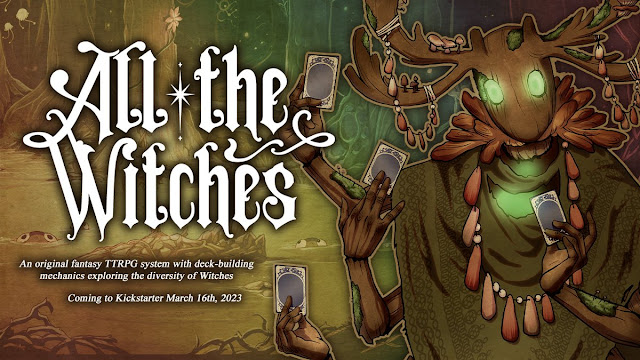
TB/TOS: That is great, I also rather enjoyed the World of Darkness, as well, and Kids on Bikes is great fun. Tell us a bit about this game and what backers should look forward to when they get it.
Emma: Absolutely! All the Witches is an original Tabletop Roleplaying Game with some deck-building mechanics utilizing the standard array of dice except for the D100. In the system, you have 5 attributes that any skill checks made during gameplay will fall under. Those attributes are Power, Agility, Soul, Mind, and Endurance. When you try to make a check, your GM will tell you what attribute they think that check relates to, and then they'll tell you to roll a certain die. In this system, the die you roll determines the difficulty of the check, and you succeed on the check if you roll at or below the corresponding attribute's rank. So if your GM tells you to make a D10 Agility check, and your Agility is rank 4, then you succeed on rolling a 4 or below. As you play the game, your Attributes will rank up, and over time you'll automatically pass certain levels of difficulties for checks because you Attribute rank is higher than the value of the die.
The deck building comes into play during encounters. Your deck is made up of number cards from either the Minor Arcana of a Tarot Deck, or from a deck of playing cards. At the start of the game, you'll have 5 cards in your deck that numerically equate to each of your Attributes' ranks. When you enter an encounter, you'll draw three cards from your deck and when it's your turn, you'll play a card from your hand. The card you play determines the number of Actions you get in that turn. If you play a 4 of Swords, then you have 4 actions that turn. You can use actions to cast spells, move, interact with objects, attack, or use abilities. As you play the game you'll add more numbered cards to your deck, some special face cards that give you special abilities on your turn, and as you reach certain parts of the game the suits of the cards you play will come into effect.
Our goal as a team is not to create an entire world in All the Witches. Instead, our plan is to feature 3 regions of the world and flesh them each out with rich detail. Groups that play All the Witches can start off in one of these regions and have entire adventures there, they can go and travel to the other regions to explore, or they can collectively imagine what the rest of this world might look like and build things together to make their stories truly theirs.

The three regions that All the Witches will feature are:
-Tane: A dense forest region that once thrived with life and beauty. Long ago, some adventurers slew a great spirit that resided in Tane, and its death sent the entire region into a spiral of corruption and Discordance. Not many live there now because the region is extremely toxic and dangerous, but those that do rely heavily on Witches to keep their towns free of corruption, poison, and dangerous creatures. Groups that start here will often find themselves fighting against the very nature around them in order to survive.
-The Golden Islands: A large chain of islands that house two civilizations that couldn't be more opposite to one another. The United Islands of Sunder are a free people that use magic to sail the seas, explore the unknown, and keep the treasures they find. Darkhammer on the other hand is a society with strict rules that uses magic to strengthen and protect their ships and trading routes. These two come into conflict often, and groups that start here will find themselves fighting people from either civilization in order to survive.
-Cyllynys: A verdant gem in the northern seas, Cyllynys is a small nation with a big impact on the world at large. Settled long ago by a diverse array of peoples, its earliest history is shrouded in myth and legend; ancient monuments of mysterious origin dot the landscape. The people of Cyllynys have, since their earliest days, put a tremendous value upon knowledge and wisdom, and this led to their development of steam technology. Now, that same technology threatens to take over the traditions and ancient monuments that once meant so much. Groups that start here will face a changing nation, and the tensions that arise because of that change.
We're committed to being a digital-only product with our Kickstarter launch for a number of reasons:
1. We're a small TTRPG project and printing generally takes up about a third of a project's entire budget. In a COVID world where a lot of groups are currently playing digitally, we think that money can be better spent on accessibility resources to help people learn and play our game. We're hoping to build a website to help people with character creation and upkeep, to incorporate links into our PDF that lead to short, professionally produced videos explaining certain portions of the rules for people that struggle learning systems just from reading text, and more.
2. Due to the world wide paper shortage the past few years, a number of TTRPG projects have been delayed, and we think that as a small project we should do what we can to encourage others to seek a paperless route. We hope to show the TTRPG industry what all can be done with your project when you aren't focused on physical prints of your books.
3. Because we're focusing on a digital product, we'll be able to include a lot more to enhance the player experience. With each purchase of All the Witches, we'll be including various music files, portraits for NPCs and Characters, digital maps, and more.
Since this is a digital product where everyone will get all the resources that are made, there will only be a few pledge levels on the Kickstarter itself. The main pledge level will be $30, and that will get you the PDF as well as all other digital resources such as musical tracks, character and NPC portraits, maps, stream overlays, stream assets, emotes, and more. There will be a $50 pledge level that's for those that want to support the book a little more, and for those that pledge at that level there will be thank you pages dedicated to them at the back of the book with fun art. Then there will be a $200 pledge level that will get a personalized thank you at the back of the book, and a Character/NPC portrait will be made based on them.
TB/TOS: What do you all feel makes All The Witches different from games currently on the market? What do you say makes it special? Or, bottom line, why should people want to buy this game?
Emma: On top of having a unique rule system that I think will surprise a lot of people, our commitment to being a wholly digital game gives us the opportunity to do a lot that other games aren’t doing. With the release of our game, we’re also sending backers tools to help enhance their online roleplaying experience including original orchestrations that tables can use in their games, NPC and Character tokens, emotes, stream overlays and assets, and professionally produced videos to help people learn our system who have a hard time learning just by reading. Additionally, since we’re digital, after release we can continue making new content for All the Witches and releasing it for free in content patches to the PDF. I like to think of All the Witches as a living TTRPG, because I have plans to keep updating it after release at no additional cost to those who have already purchased the book.
TB/TOS: Tell me a bit more about the deck-building mechanic. This is a feature of a few games, but not really a lot.
Emma: I talked a bit about the deck-building mechanics above, but it’s a really hard system to incorporate into a TTRPG without those mechanics becoming the sole-identity of the rules. I wanted to find a way to have deck building, but also have it be balanced with the rest of the system without stealing the spotlight from the other mechanics. It took me a long time to figure out, but I think I found a really great way to do it, and I’m excited for everyone to see the ways deck building influences the entire system and what it brings to it as a whole.
TB/TOS: What sorts of games do you see others playing with these rules? In other words, what can players do in this game?
Emma: There are so many different kinds of games that people can play with All the Witches. Groups can use All the Witches to have a magical school simulator where you live as students, recruit new professors to your schools, meet new students, establish new traditions, and more. They can use the system to play an entire campaign centered around the magical sport that we’ve created called Ryndarost. They can follow a traditional story of adventure and fighting monsters that have been brought about due to the corruption in the world. They can even become heroes that ease the corruption in the world through a special mechanic called a Harmonization Ceremony! The goal is to build a system full enough that a group can take it and use it for any kind of story that they’d like to explore about Witches, and I think we’ve got a really amazing team in order to bring that vision together.
TB/TOS: The art so far in All the Witches looks amazing. What is the diving vision here on the art and how does that influence the game design and vice-versa?
Emma: That’s incredibly kind of you to say! I think art is one of the most important things for an indie TTRPG, and it absolutely helps bring life to the world. I’m not an artist, but working with artists causes me to think about how things look visually, because they ask me a lot of questions, and that causes me to have to make a lot of stylistic decisions about the system that have an impact on everything. Do Witches use a staff or a wand? What do they look like and what are they made of? Do Witches have to have them in order to cast magic? What benefits does using a staff or wand give to a Witch that they wouldn’t have normally? One simple question often branches off into so much more, which helps our team develop a fuller and more cohesive game.
Because I’m not an artist, I’ve been working alone for a lot of this pre-Kickstarter process to pull together cool images to help give life to All the Witches. But hiring Nala Wu has been incredibly helpful, and they’re expertise has already proven invaluable. They’re going to start working fully on all the art for All the Witches after the Kickstarter, but they helped me put the cover and the landscape pieces together, and those pieces bring so much life and character to our game that I’m excited to see what we’re able to make together next once we have our funding.
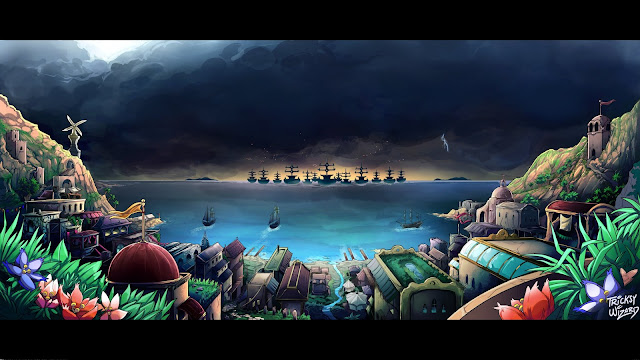
TB/TOS: Who would you say All the Witches is for?
Emma: All the Witches is a game made for those who grew up escaping into worlds of fantasy and magic that have felt abandoned by those world’s creators. We are here to give you the tools and resources to explore a world full of magic and adventure with stories built by you and those you love. Escape into a new world of fantasy and magic built by a team of Queer and BIPOC writers and designers.
TB/TOS: What are your future plans for this game?
Emma: If all goes according to plan and we successfully fund and are able to fully create and release All the Witches, the plan is that I’ll periodically keep updating the game with new content that will be released for free to everyone who owns a copy of the PDF while I continue working on my next two unannounced TTRPG projects.
TB/TOS: And, for the benefit of my audience, well, and me (!), who are all of your favorite witches or magic-using characters?
Emma: I grew up on Final Fantasy games and RPGs, so Vivi from Final Fantasy IX will always have a special place in my heart on top of Morrigan from Dragon Age: Origins!
TB: And finally, where can we find you all on the internet?
Emma: You can find us on Twitter @allthewitches_ to keep updated on everything going on, and you can find my personal account @emmapanada!
--All the Witches is Kickstarting right now! Check it out.
